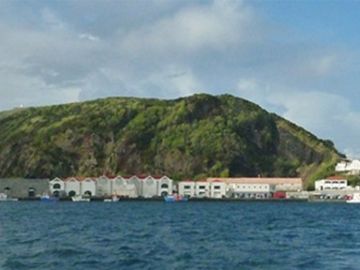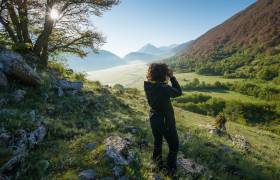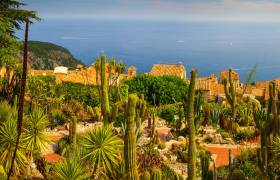Will Exodus’ Natasha Preston finally realise her dream to see the largest predator on the planet?
As first light slanted through the curtains my mind raced. Would today be the day? But my heart sank as I looked out over the glistening cobbled marina. The moody steel sky and tempestuous winds – evidence of a nocturnal downpour – immediately dampened my spirits. I strode out with stoic English determination, deciding the ocean didn’t look too choppy for me and, under the guidance of the boat’s skipper, Mario, and a rather dashing marine biologist, Aderio, set sail for my first whale watching excursion with high expectations.
It was not long before those expectations crashed into high waves and were battered by high winds, and my head hung melancholically over a sick bag. There were no whale sightings that day. The following dawn broke with more promise, greeting me with blue skies, but I wasn’t hitting the waves just yet – a pleasant day ambling around historic Horta awaited. The harbour town began as a whaling hub and remained so up until the mid-1980s, though thankfully those dark days of butchery have been left behind. Now the town is more readily associated with whale watching and hardy sailors enjoying a mid-Atlantic respite. Though far from proud of their whaling history, its evidence is everywhere, from the intricate carvings in the Scrimshaw Museum to the bleakness of a dormant whaling ramp and wench in the bay. Other traditions are easier to stomach: every inch of the harbour walls is decorated with nautical graffiti, a ritualistic practice thought to bring good luck to sailors. Each naval crew would adorn a section of the marina with their ship’s emblem to ensure a trouble-free crossing. It was fascinating – but I found myself looking longingly towards the sea, where waves crashed and whales wallowed. A second day passed without a whale sighting.
Mid-week arrived and, even with the sea churning again, there was no doubt in my mind how I was going to spend this day: at sea with my nautical chums searching for the giants that had eluded us thus far. The inky waters around this small island chain teem with cetaceans, thanks to almost three decades of strict conservation law enforcement. Some species, like Fin and Sperm whales, and Common dolphins, are permanent residents around the Azores, while others, such as Blue and Humpback whales, simply pass through the archipelago’s nutrient-rich waters during the epic migratory journeys. And yet somehow, all of them had eluded us. Just as we hit open water, a single glowing shaft of light angled from the gloom. Instantly I felt a glimmer of hope. Leaning back to soak up the warm rays on my face, I heard the radio hiss and crackle. Mario responded to the muffled missive, nimbly changed direction and headed full throttle towards the horizon. The wind and ocean spray stung my skin, the salty water crusting around my eyes. From nowhere, a small pod of Common dolphin leapt out of the spray and began to frolic alongside our bow and a double rainbow appeared, arcing over us. “Things are looking up” said Aderio with a knowing glint in his eye.
Some minutes later Mario throttled right back until we were bobbing gently atop the deep blue. The three of us scoured the ocean in every direction, waiting impatiently for any signs of life. Every rogue whitecap fooled me, every sea bird diving headfirst teased me. Then suddenly I spot that unmistakeable plume of spray. “There she blows! Do you see it?” exclaimed Aderio excitedly. “Yes, yes I see but what is it?” I had a hunch, and Aderio cemented any doubt. Squinting through my binoculars whilst trying to balance myself against the swell, I noted the direction of the blow was slightly to the left, and then I saw it, the distinctive blunt-headed profile of a Sperm whale spyhopping over the spiky sapphire waves. As I stood there looking in awe at the world’s largest predator, another surfaced closer to us. I refocussed on the newcomer just in time to watch it fluke and plummet into the depths.
Knowing a Sperm whale will not resurface for the best part of an hour after a deep dive, we moved on in the hope of finding more cetacean company nearby. Beneath the dual ribbons of colour, we wiled away the time until this blissful marine vista was enhanced by the appearance of two Fin whales – this time a mother and calf. These baleens hung around a little longer than their toothed counterparts. The mother was careful to always place herself between her precious cargo and the boat. Finally, with twin blows perfectly bisecting the twin rainbows, they disappeared below into their own pot of gold. Natasha travelled on our Whale & Dolphin Watching in the Azores.
See all our Marine wildlife adventures.




